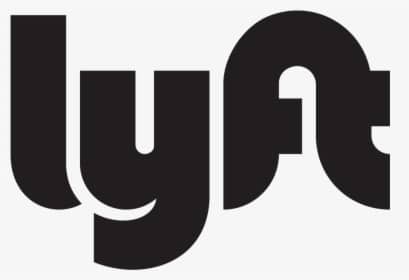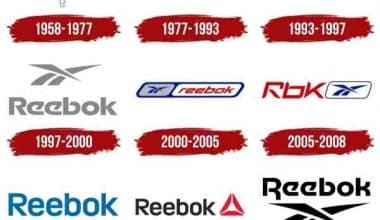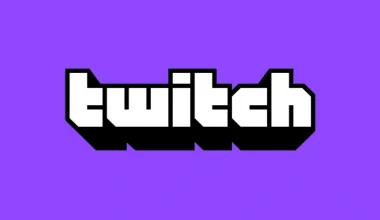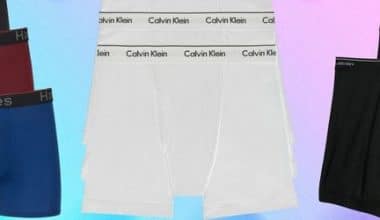The Lyft logo is more than just a symbol of a ride-sharing company. It’s a reflection of the company’s values and mission.
The Lyft logo is a simple yet effective design. It features a white “L” on a magenta background. The “L” is stylized to look like a person waving, a nod to the company’s focus on community and connection. The magenta color is also associated with fun, excitement, and energy, all qualities that Lyft strives to embody.
But in this article, we will look closer at the Lyft logo and the brand itself. We will also discuss the history of the logo, the different variations used over the years, and the meaning behind the design.
Let’s get started…
What is Lyft?
Lyft is a car rental company that ranks second in the United States for ridesharing. It also offers taxi and food delivery services. The brand uses a dynamic pricing scheme, with fees set based on supply and demand in local markets. The company’s headquarters are in San Francisco, California.
The History of Lyft
Logan Green and John Zimmer founded Zimride, the company that would eventually become Lyft, in 2007. Zimride initially focused on long-distance ridesharing. However, in 2012, Zimmer and Green launched Lyft as a Zimride service that provided ridesharing for much shorter trips. By 2013, the company had changed its name to Lyft, and the emphasis had shifted almost entirely to short-distance ridesharing.
Lyft’s business model entailed hiring drivers to transport passengers in their vehicles. Following the ride, the passengers’ Lyft accounts would be automatically debited for the cost of the ride. The driver would receive 80% of the money, while Lyft would keep the remaining 20%.
Lyft used a fuzzy pink mustache on the front of their vehicles as part of their marketing. Passengers were also encouraged to sit in the front seat and fist-bump the driver when they entered the car. Later, Lyft would introduce a color-changing dashboard indicator and a mustache-shaped light that drivers would place in place of the fuzzy pink mustache on the front of their vehicle. These factors combined created a unique experience that helped Lyft stand out from the competition.
Lyft announced in January 2017 that it would add 100 US cities to its list of cities served, bringing the total to 300 US cities. While Lyft has faced some regulatory challenges, they have overcome these to become a company worth $7.5 billion.
Clever marketing and a unique ridesharing approach have been instrumental in growing the Lyft brand throughout the company’s short but successful history. The company’s recognizable logo has played a significant role in its success.
The History of the Lyft Logo
The original Lyft logo was created by collaborating with a friend of the company’s founders, Ethan Eyler. Eyler was running a company that sold large, fuzzy pink mustaches attached to a vehicle’s front. Zimmer and Green first distributed the mustache ornaments at Lyft events, and the faint pink mustaches quickly became an inseparable part of the Lyft brand. Soon after, the recognizable mustache design was added to the Lyft logo.
The mustache was eventually dropped from the Lyft logo, though it can still be found on many Lyft vehicles, and the Lyft logo still features its iconic bright pink color and bubble letter font.
Elements of the Lyft Logo Design
Lyft wanted to position itself as a fun, hip alternative to taxis, and part of that included creating a bright, fun, and comical logo.
The color pink is also significant for Lyft because it tries to convey that it is friendly to both female drivers and passengers. Lyft wanted to break away from the typically masculine designs seen in the transportation industry, and a pink logo with bubble letters was the ideal way to do so.
Font
When it adopted a bright pink wordmark, the taxi aggregator set itself apart from competitors, most notably Uber. Customers were drawn to the light-hearted and easy-going atmosphere at the heart of Lyft’s concept, and he made a splash. People who see the fluffy mustache and funny inscription may feel safe even if in the same car as a stranger.
All letters in “Lyft” are lowercase, including the first “l.” The typeface is unusual: the letters “f” and “t” merge to form an abstract shape that curves down from above. Symmetrical stripes represent horizontal strokes. This merger represents the primary goal of the transportation service: to transport passengers from one location to another quickly and without incident. Lyft’s unique lettering style and bubble font position the company as a fun alternative to the austere and authoritative Uber.
Color
Pink (# FF00BF) is the color of the legendary logo. The background is typically white, but it can be black depending on the visual context (# 11111F). Customers will immediately notice the word mark because of the vibrant color palette.
Emblem
Pink mustaches appeared in the original logotype thanks to Ethan Eyler, a friend of the company’s founders, Logan Green and John Zimmer. When Lyft was in its early stages, Eyler was the CEO of a company that sold large pink mustaches that could be attached to a car’s front grille.
Zimmer and Green thought it would be fun to adorn the front grilles of Lyft cars with such mustaches, so they began giving them away at company events and incorporated them into the logo.
Lyft’s Pink Moustache Symbol
This portion of the logo was eventually removed. As the company expanded into the premium segment, it began to provide its drivers with more discreet options. Instead of a “regular” pink mustache, the driver could choose a mustache-shaped light or a color-changing dashboard indicator. Despite this, the mustache remains the most recognizable element of Lyft’s branding.
The popularity of the Lyft Logo Lyft’s distinct branding has been critical to its success. The bright, fun Lyft logo became instantly recognizable, and any vehicle with a pink mustache on its grill could be identified as a Lyft vehicle. The Lyft logo was unique in a good way, which helped to distinguish the company in the eyes of its customers.
As Lyft began offering premium, black car ride services, the bright pink mustache became less noticeable. The concern was that someone attending a vital business meeting would not want to arrive in a car with a large, pink mustache on it. To combat this, Lyft introduced the “glow stache,” a light in the shape of a mustache, and made the mustache smaller. Nonetheless, the pink mustache is an integral part of Lyft’s branding and can be found in some form or another on nearly every Lyft vehicle.
Read Also: St. Louis Cardinals Logo: History, Meaning, Evolution
Lyft decided to buck the trend and make a splash in an industry dominated by no-nonsense, masculine designs. Customers were drawn to the fun and light-hearted spirit at the forefront of Lyft’s branding, so the decision worked well for the company.
Aside from redefining transportation company branding, the Lyft logo has also assisted the company in reaching out to female customers and drivers, making them feel welcome and secure inside a Lyft vehicle.
Industry trends are sometimes meant to be broken, and the Lyft logo does just that. Though many factors contributed to Lyft becoming a multibillion-dollar company, Lyft’s fun logo and unique branding were undoubtedly a part of that strategy, and the history of the Lyft logo and the success that it has brought them are testaments to the difference that a great logo and great marketing can make in a competitive market.
Related Articles
- 2023 BEST NO INTEREST CREDIT CARDS, Updated
- 15 BEST BANKS TO OPEN CHECKING ACCOUNTS WITH 2023
- Call of Duty Logo: History, Meaning & Evolution
- 12 Components of Business Plan (Detailed Guide)
- BUY NOW PAY LATER COMPANIES 2023 & All You Need.
- 7+ BEST APPS FOR HOTEL DEALS in 2023 (Updated)






